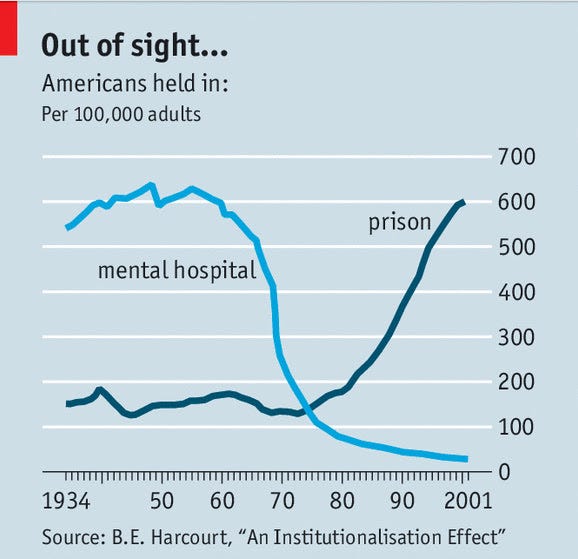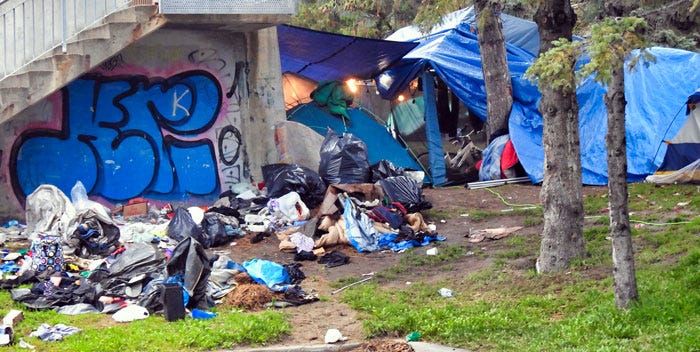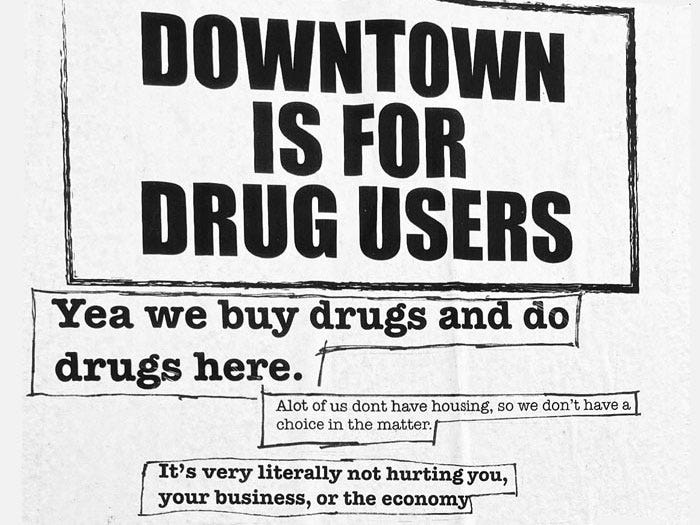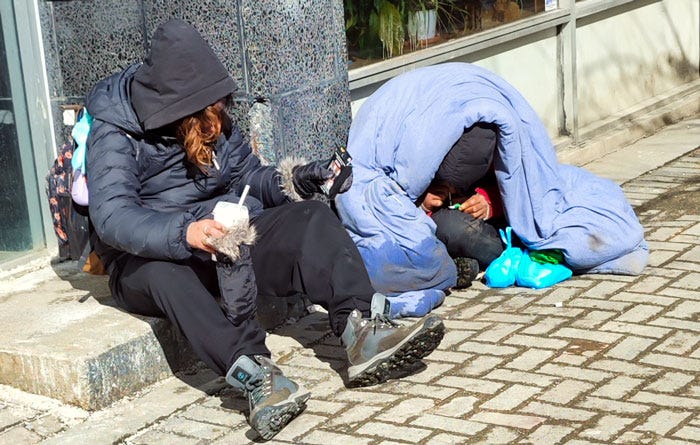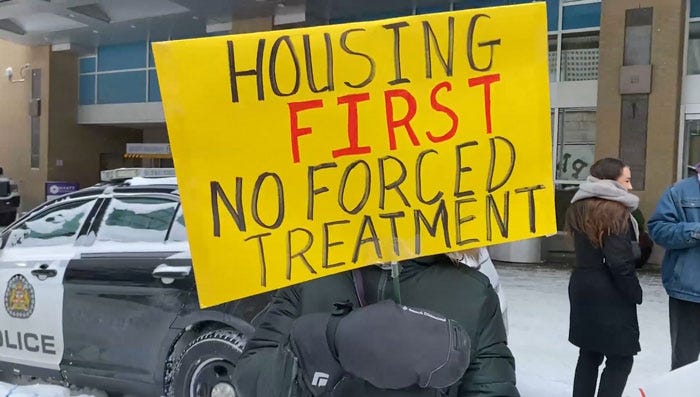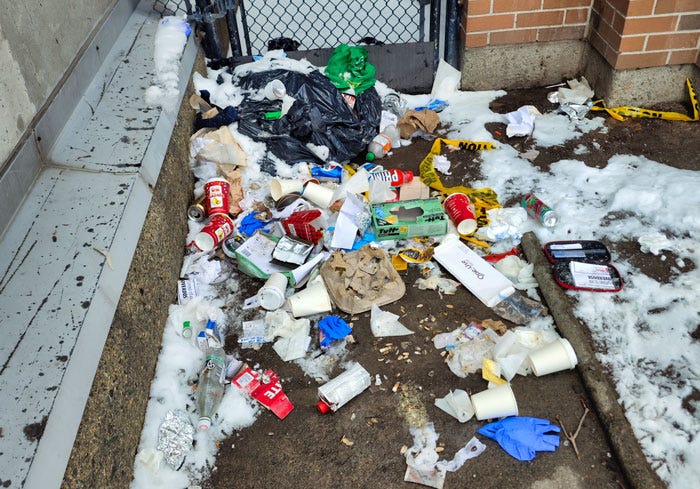999 Queen Street Toronto
The mental asylum was the historical equivalent of the modern psychiatric hospital. The name came from the earliest religious institutions that provided asylum in the sense of refuge to the mentally ill.
The changing view of mental health can be seen in Toronto’s Queen Street Mental Health Centre’s various name changes. Originally Provincial Lunatic Asylum, it was renamed Asylum for the Insane in 1871, Hospital for the Insane in 1905, and simply Ontario Hospital, Toronto in 1919. In 1996, it became Queen Street Mental Health Centre and starting in 1998, Centre for Addiction and Mental Health (CAMH).
The deinstitutionalization movement in Canada began in the 1960s. It was the process of discharging chronic mental health patients into the community in order for them to receive care from community mental health services.
Why were they closed?
There were two reasons. Pick the one you prefer.
1.) We were enlightened and no longer wished to "warehouse" people.
2.) The provinces wanted to save money.
Was it a good idea? No.
People who can barely function were kicked to the curb in this province, their problems hidden away because we decided to call them different names. The homeless. The panhandler. The addict. The criminal. The bottle-collector.
Everything but what they actually are. People who need to be in a long-term, mental health hospital.
—Ron Corbett Ottawa Sun
For years, jails and prisons filled the gap left by the closed mental hospitals. That is no longer the case because the prison populations decreased.
There are two reasons. Pick the one you prefer.
1.) We are now enlightened and no longer wished to "warehouse" people who make
poor decisions.
2.) The court system and the police are overwhelmed by the increase in crime.
A downtown city park hosting homeless tents and garbage, lots of garbage.
We now have extremely powerful drugs that are creating unprecedented numbers of addicts. They, in addition to the alcoholics, the mentally ill, the physically disabled, and the unemployable, live in flop houses, in tents, on the streets and in emergency overnight shelters.
A man living in a cardboard box on Toronto’s Bay Street.
On the sidewalk outside Osgoode Hall in downtown Toronto.
The downtown streets and parks are where most drug addicts, alcoholics and the mentally ill spend most of their time. That is where their social services, overnight shelters, soup kitchens and the drug dealers are.
From a leaflet distributed by the Drug Users Liberation Front in San Francisco.
Yes, our downtowns are home for drug users, the dealers and the mentally ill. Where else can they go?
Two addicts, sitting on the cold concrete, preparing their fentanyl injection.
The downtowns are not safe
Sudbury Police posted this on Twitter on October 2023.
Allowing the mentally ill to wander the streets is dangerous. The lawyers for a man accused of murdering a 79-year-old man in Nanaimo by stabbing him 12 times are arguing he should be found not criminally responsible due to a mental disorder.
A popular local thrift store in Nanaimo is closing up shop permanently in May with the owner saying fear of downtown area social unrest has driven their customers away.
A lot of people don’t feel safe coming down here, and we fully understand that, and that’s nothing that we have any control over whatsoever.”
Housing First
Housing First is a theory that claims being homeless triggers people to become drug addicts. So the key to solving the addictions problem is to get everyone into permanent housing with 24/7 wrap-around support.
Once they have a home, in time, they will voluntarily request help in getting sober. There must be no forced treatment. This theory, (like the belief that the sun revolves around the earth), is probably not credible but it is the current conventional wisdom.
Why Housing First is a failure
Our society does not have enough rent-geared-to-income housing for all the people who need them and we cannot afford to build them. Plus, there is no way we could afford the operating costs of paying for 24/7 wrap-around supports that the addicts and the mentally ill require when they are given low-barrier housing.
What can’t be said
Adopting the Housing First theory addresses the need to show compassion while the pressing goal is to get the unsightly homeless, and their garbage, out of the downtown parks and off the streets.
There is no way we will ever have enough permanent housing for all of the homeless.
Unlicensed mental hospitals now the rage
Real mental hospitals are expensive to build and to operate with qualified personal so we are winging it with low-barrier, non-congregate shelters in motels, hotels, rooming houses, tiny cabins, and sanctioned tent grounds. Promised 24/7 hour wrap-around services are the glue that is supposed to hold everything together.
These inexpensive, unlicensed, unsecured, “mental institutions” operate without trained staff and they lack long-term medical treatments. Too often, the residents, and staff—persons with “lived experiences—have the run of the place.
These housing arrangements are better than having people sleep on the streets—the waiting room for permanent housing should not be the sidewalk—but these residential warehouses are not the answer because they are:
• very expensive to operate.
• crime ridden.
• dangerous for other tenants and the staff.
• locations for numerous overdose deaths.
• are fire prone.
What is being done now is cruel. We need to bring back mental hospitals and build centres for the compulsory treatment of drug addicts.







